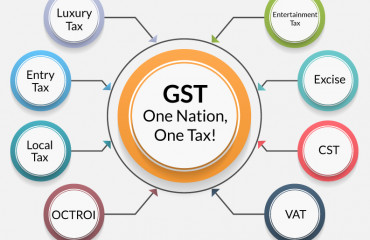
New Delhi: State development loans (SDL), or bonds issued by state governments to manage their revenue and fund their fiscal deficit, are unlikely to meet the target for FY24, much like last fiscal.
New Delhi: State development loans (SDL), or bonds issued by state governments to manage their revenue and fund their fiscal deficit, are unlikely to meet the target for FY24, much like last fiscal.
That, however, may not be much of a worry, considering that state fiscal deficits are on the way down, thanks to higher tax collections and long-term interest-free loans from the Centre.
So far in FY24, states have raised about ₹9.76 trillion of the targeted ₹10.88 trillion, according to data from Reserve Bank of India (RBI). In FY23, the ₹7.78 trillion raised from SDLs had fallen short of the targeted ₹9.96 trillion.
In a case resembling a year-end sale, 18 states have offered to auction SDL stock for a cumulative ₹60,032.49 crore in the current fiscal's final weekly auction on 26 March, according to the RBI. But even that is unlikely to help achieve the target.
The more-than-expected proceeds from goods and services tax (GST) and release of a large chunk of 50-year interest-free loans from the Centre in the current fiscal have likely given states the financial space without having to raise more from the markets, said a finance ministry official, who spoke under the condition of anonymity. "It's important for states to be fiscally prudent even in the face of looming elections," the official added.
In addition, as of 31 December 2023, (Q3, FY2024), the Centre had released about ₹60,104 crore in interest-free, capital expenditure loans to states, out of the ₹80,000 crore earmarked for this fiscal year, according to finance ministry data.
Meanwhile, the total gross GST collection so far during the current fiscal (April 2023-February 2024) stood at ₹18.40 trillion, 11.7% higher than the mop-up for the same period last fiscal. The budget estimates (BE) for FY25 has pegged states' share of tax devolution at ₹12.2 trillion, an increase of over 10.4% to the amount devolved in FY24, according to the revised estimates for the fiscal.
A Union finance ministry spokesperson didn't respond to emailed queries.
An SDL is a bond that state governments issue and can be bought by mutual funds, pension funds, provident funds, commercial banks, insurance companies and even individual investors through an RBI platform. The RBI manages SDL issues and ensures that they are serviced by monitoring payment of interest and principal. SDLs offer interest rates that are usually higher than central government bonds and are considered risk-free since they are backed by a sovereign guarantee. The interest is paid twice a year, and the principal amount is repaid on maturity, which is usually 10 years but can also be issued with another maturity period.
A lower (interest) rate is driving states to borrow during the final quarter of the fiscal year as the central government borrowing has been front-loaded (borrowings being made in the first few quarters), said Venkatakrishnan Srinivasan, managing partner at Rockfort Fincap LLP, a financial advisory firm.
"If you see states' overall actual borrowing for this fiscal, it is still lower than the indicative borrowing amount mentioned in the calendar. However, maximum state borrowings are loaded in March and that, too, in the last 15 days," Srinivasan said.
"It's good to witness that the market has grown so much as the last auction cut-off pricing was within the range and, surprisingly, not moved up with oversupply," he added.
State government expenses usually increase during elections, due to increased spending on social welfare schemes during the election year. Most state governments have so far stuck to the path of financial prudence.
According to a recent India Rating report, the aggregate fiscal deficit of 26 states is estimated to shrink to 3% of GDP in the next fiscal (FY25) from 3.4% in FY24, with states' borrowings being primarily used for capital expenditure during the period. Aggregate fiscal deficit of states in FY23 was 3.6%.
The report said the combined revenue deficit of states, or the difference between revenue receipts and expenditure, is expected to fall to 0.2% (of the GDP) in FY25 from a projected 0.5% in FY24. Aggregate revenue deficit of states in FY23 was 0.3%
